Shipwrecks of HMS Terror and Erebus Discovered In the Arctic
Terror and Erebus met their doom seeking the Northwest Passage. Now, underwater expeditions may help unlock their long-held secrets
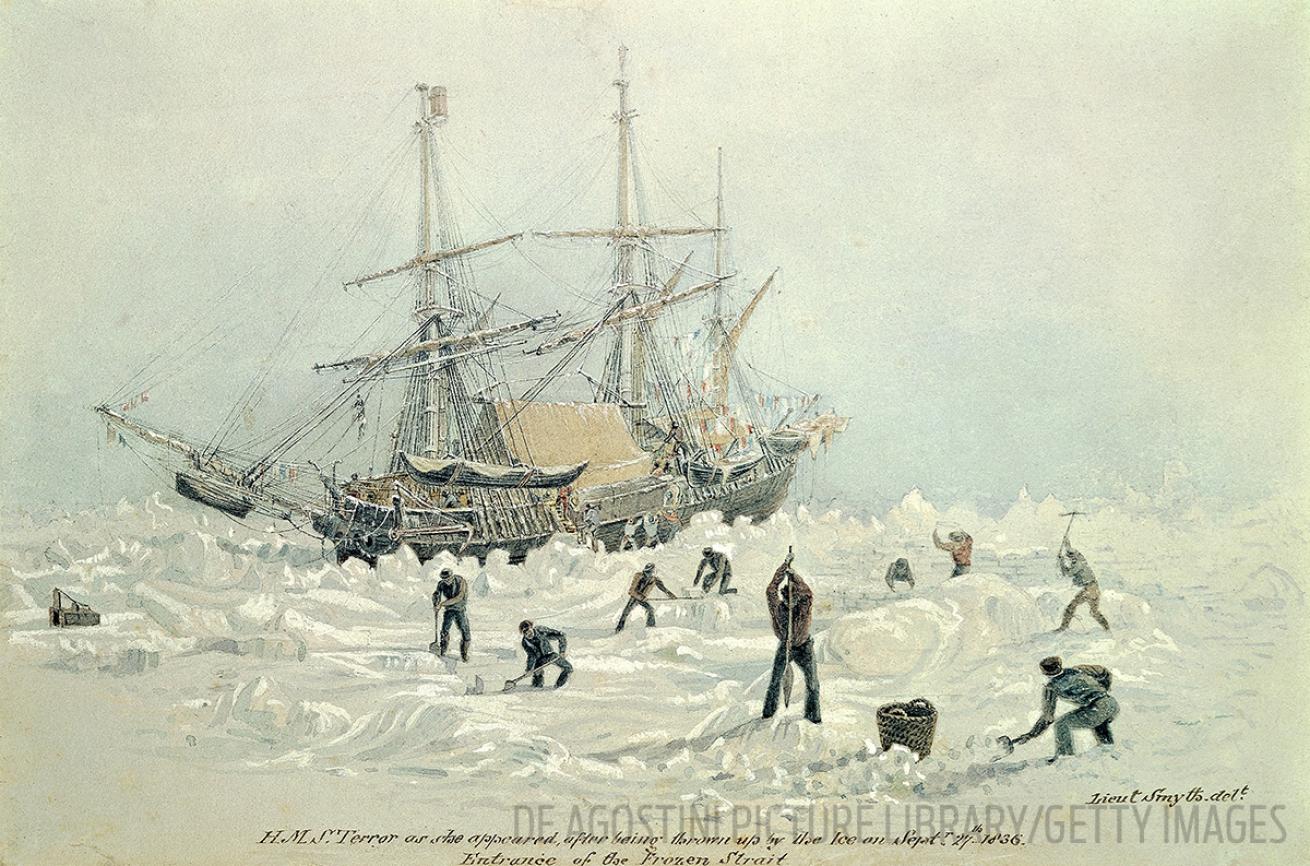
De Agostini Picture Library/Getty ImagesHMS Terror served in the War of 1812 against the United States and had previous Arctic experience (pictured in 1836)
Cannibalism. Madness. Monstrous hardship. And more than 100 men who simply vanished. For nearly 170 years, tales of Terror and Erebus — ships of the 1845 Franklin Expedition seeking the Northwest Passage — have fascinated seamen and history buffs. “I’ve come to think of it as almost a kind of virus,” says Russell A. Potter, author of Finding Franklin: The Untold Story of a 165-Year Search (McGill-Queens University Press, 2016).
“Franklin fever” drove the Royal British navy to keep looking for the ships for decades; Canada’s national park service took up the search, along with Inuit and private partners, in 2008.
Call it the rare upside of climate change: Diminishing ice helped Canada’s efforts pay off in 2014, when Erebus was found, and again this past fall when Terror was located, in Queen Maud Gulf — 60 miles from the Victoria Strait, where scant historical records suggested the ships should be. Some researchers now believe either or both ships were remanned and sailed south. But why? And by whom?
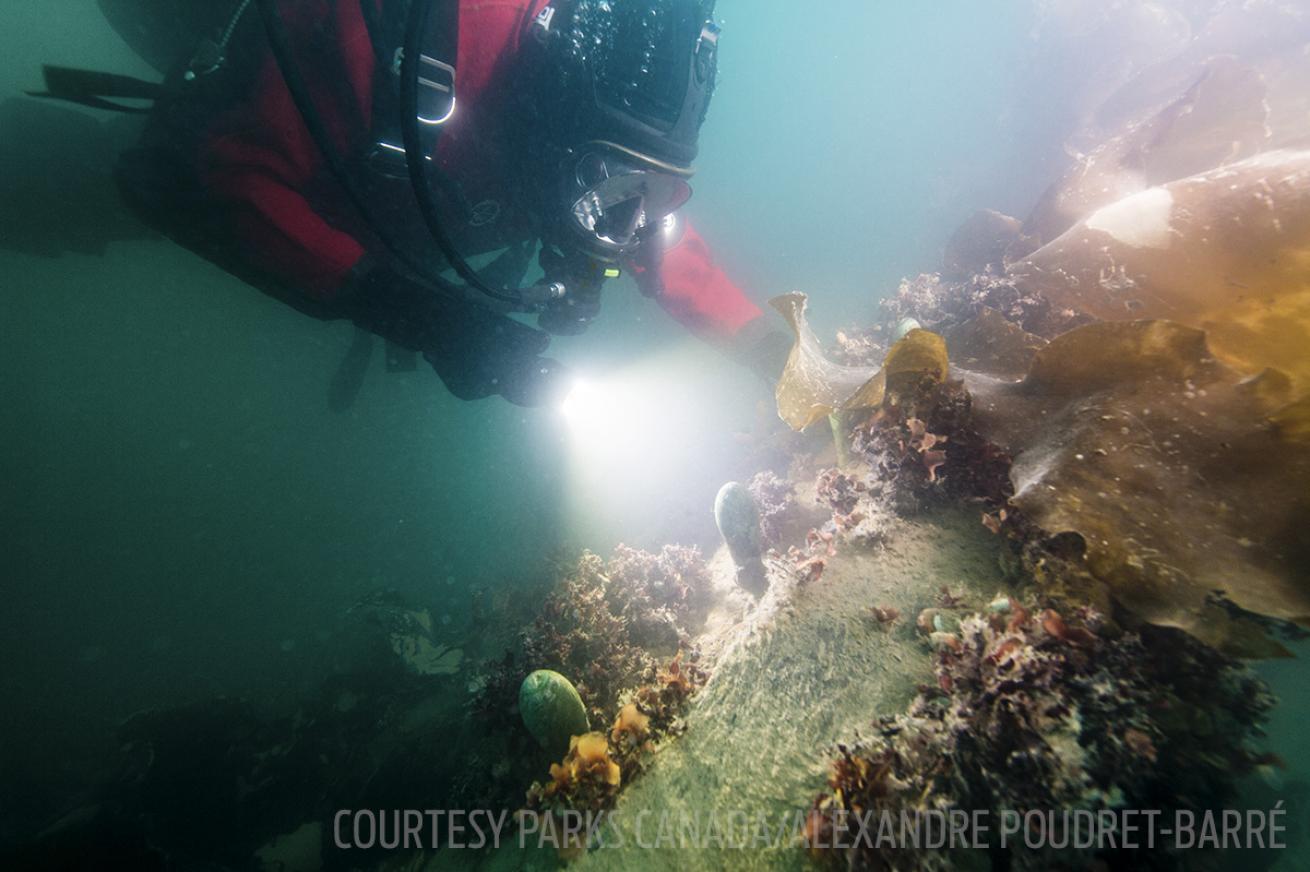
Courtesy Parks Canada/ Alexandre Poudret-BarréA scuba diver with Parks Canada conducts an underwater archaeological survey of Terror.
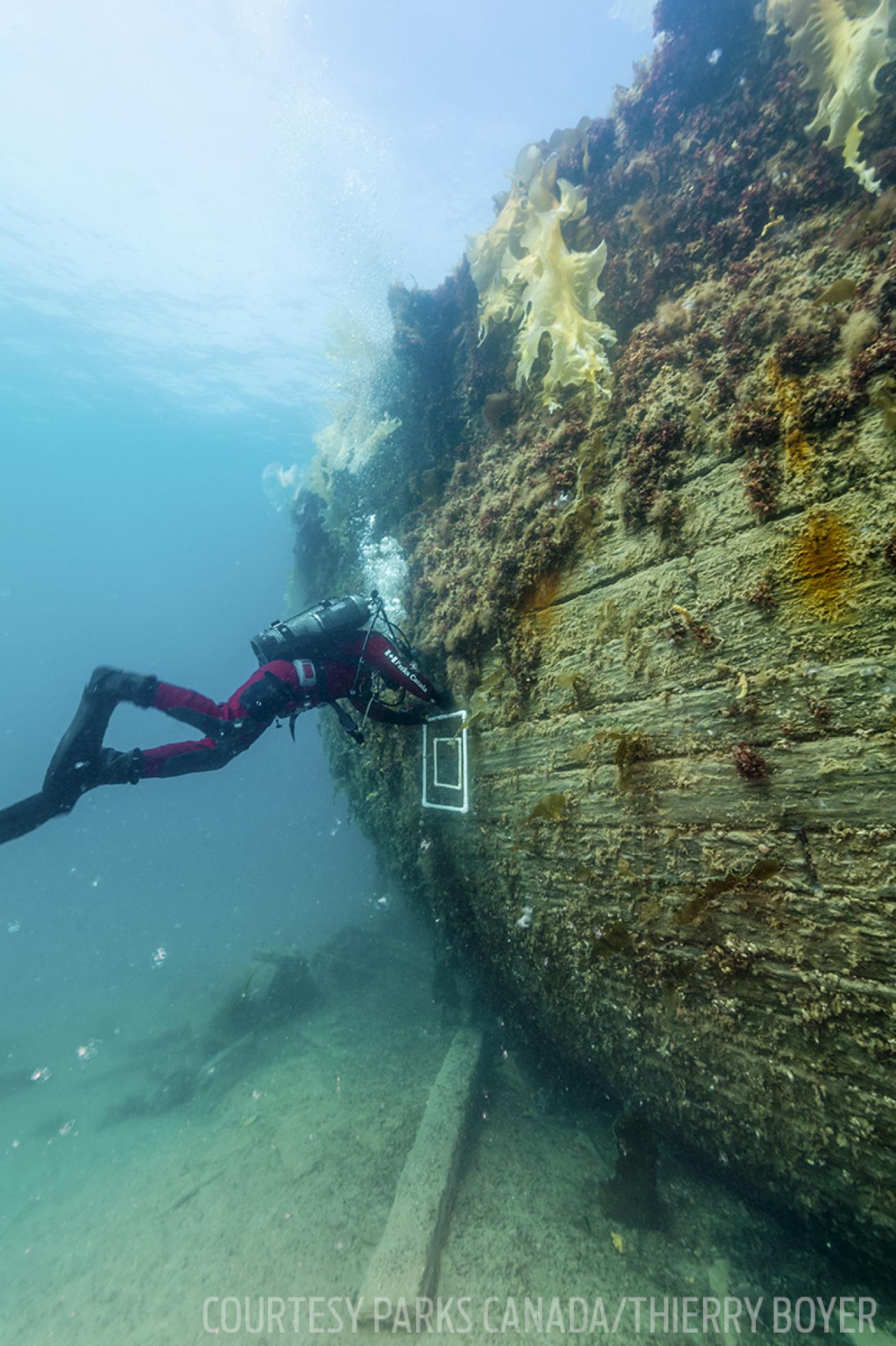
Courtesy Parks Canada/Thierry BoyerParks Canada archaeologists are conducting surveys on the wrecks of Terror and Erebus to find out more about the ill-fated Franklin Expedition.
Finding Franklin and Paul Watson’s Ice Ghosts: The Epic Hunt for the Lost Franklin Expedition (Norton, 2017) set out to shed light on a mystery that was the Amelia Earhart legend of its day. Two 100-foot military ships, reinforced with iron and crewed by men and officers experienced in the Arctic, set out to find the fabled northern sea route from Europe to Asia. Within a year and a half, Sir John Franklin was dead and both ships were stuck fast.
After a two-year siege, it’s believed that both crews abandoned their ships — still full of nearly three years’ worth of canned goods that may or may not have prematurely spoiled — and set out to walk hundreds of miles across the Arctic to the Canadian mainland. None arrived.
Inuit legends include tales of men staggering over the ice, their faces blackened by scurvy, reduced to eating their fallen companions. (Cut marks on bones discovered on King William Island may bear out native stories.) Some Inuit legends — dismissed by nonnative searchers — even pinpointed the spot where Terror eventually was found in remarkable condition in about 80 feet of water. (Erebus, more exposed to the elements at about half that depth, has fared less well.)
Initial explorations of Terror last fall, with scuba divers and ROVs, fostered hopes that the upright ship could still contain logs or other illuminating documents.
In April, Parks Canada and an Inuit team mounted a five-day expedition that used an ROV to collect photos and video of Terror’s anchors, tender, bell and other features. On an earlier expedition to Erebus, scuba divers working below the ice documented collapsed decks and a host of artifacts. Its instability means exploration of Erebus might take precedence, but Parks Canada will be studying these legendary ships for years to come.
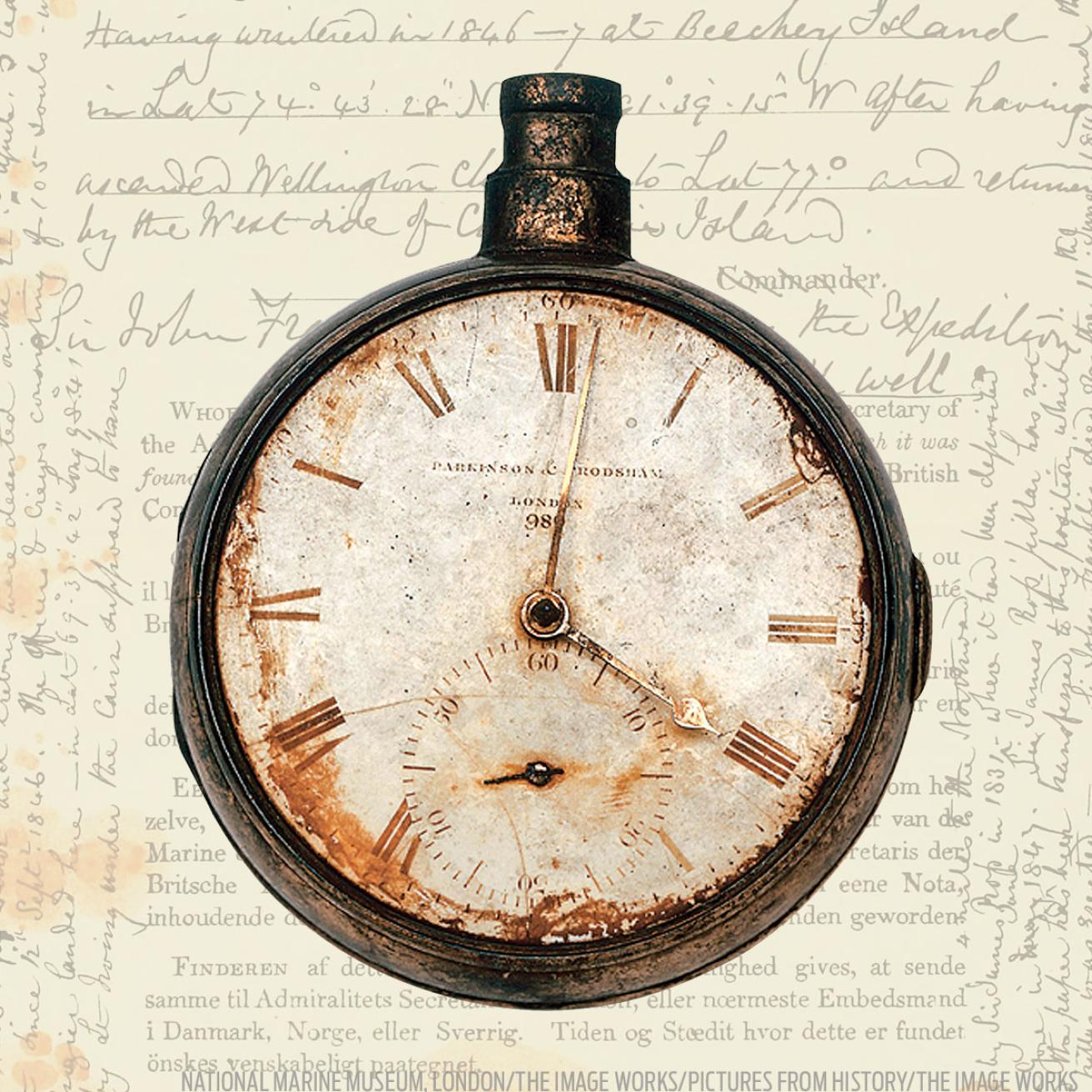
National Marine Museum, London/ The Image Works. Background: Pictures From History/ The Image WorksThis pocket chronometer was issued to HMS Terror in 1845; clues to the fate of the expedition were included in a note found in 1859.
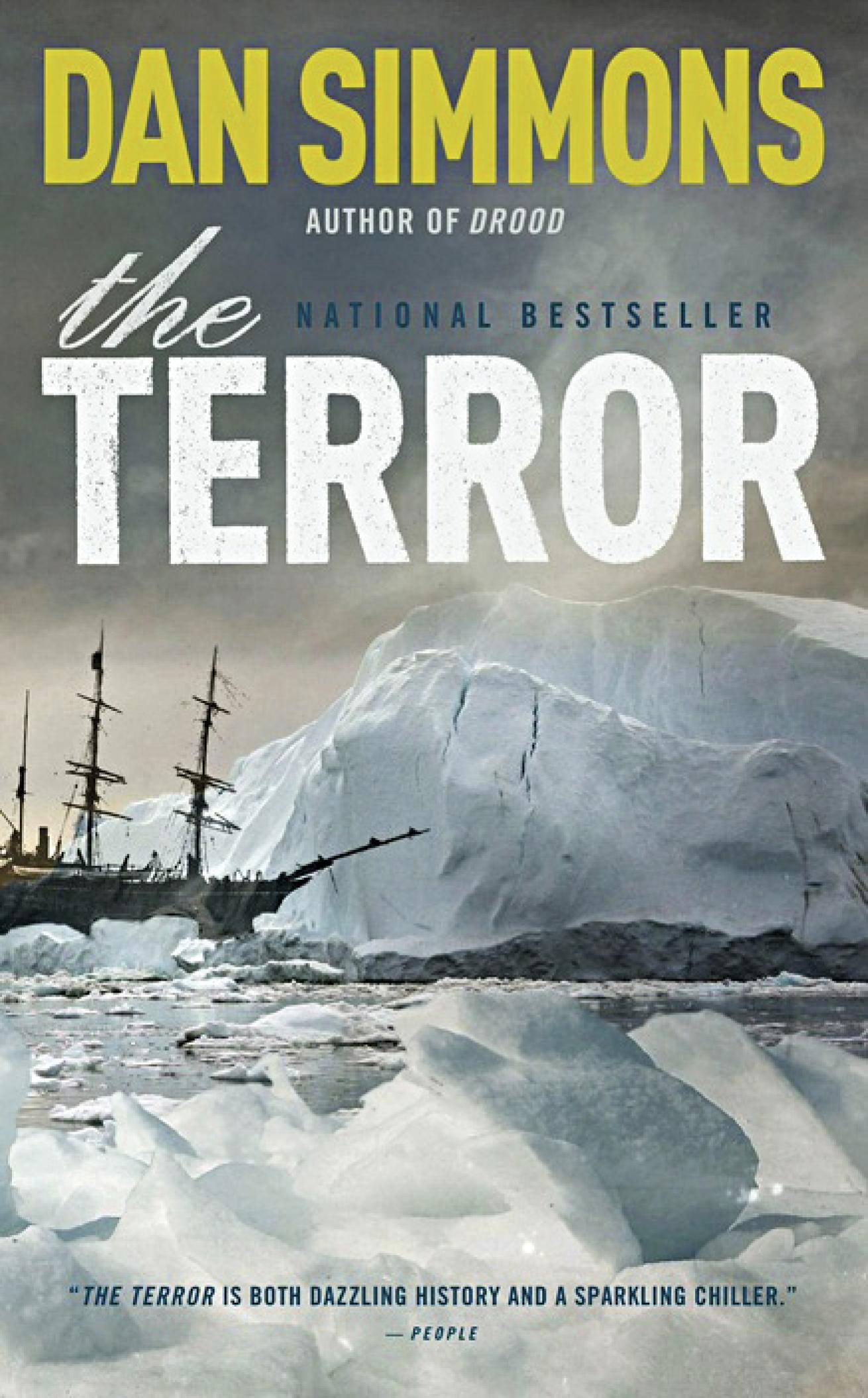
Courtesy Little Brown and CompanyThe Terror by Dan Simmons.
Read More About the HMS Terror
Dan Simmons, author of best-selling novel The Terror, a meticulously researched fictionalized account of the disaster, told NPR there was one thing he hopes exploration of Terror will clear up: “I based some of my work on Inuit legends, and my favorite one was about natives who went aboard years after the boat was abandoned. According to their stories, they found bodies in the bunks. One of them was a man whose hair had grown wildly long, covering his face — you just see his eyes. And he was smiling terribly because he had the teeth of a giant rodent. So I’ll be interested to see if we can find that.”










